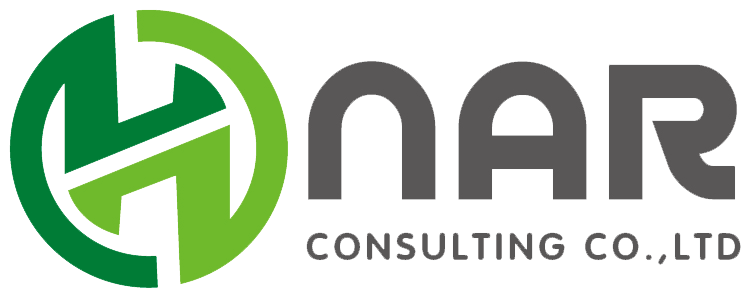Chemical safety technical instructions SDS and chemical labels
 (M)SDSIntroduction
(M)SDSIntroduction
MSDS is the English abbreviation for the Material Safety Data Sheet (MSDS) and is often translated into chemical safety instructions. SDS (Safety Data Sheet) is a safety data sheet. SDS is one of the corporate obligations stipulated in the GHS (Globally Harmonized system of Classifi and labeling for chemicals) regulations of all countries in the world. SDS is called MSDS in certain countries, but MSDS and SDS play exactly the same role in the supply chain.
It is a comprehensive legal document on the characteristics of chemicals provided by chemical production, trade and sales enterprises to downstream customers and the public in accordance with legal requirements. It provides 16 items of chemical physical and chemical parameters, explosion performance, health hazards, safe use and storage, leakage disposal, first aid measures and relevant laws and regulations.
MSDS can be prepared by the manufacturer in accordance with the relevant rules. However, in order to ensure the accuracy and compliance of MSDS and avoid the risk of accidents in the process of production, circulation, use and storage of chemicals, it is suggested that enterprises entrust Xinanrun Consulting to provide MSDS services.
 What situations require (M)SDS?
What situations require (M)SDS?
The State Council's new "Regulations on the Safety Management of Hazardous Chemicals" (Order No. 591) stipulates my country's mandatory use requirements for MSDS and safety labels from the legal level. Decree No. 591 clearly stipulates that hazardous chemical manufacturers shall provide chemical safety technical instructions that are consistent with the hazardous chemicals they produce, and paste or tie on the packaging of hazardous chemicals (including outer packaging). Chemical safety labels that are consistent with the hazardous chemicals in the package. At the same time, regulations such as the Announcement No. 30 of 2012 of the General Administration of Quality Supervision, Inspection and Quarantine, the Measures for the Registration and Administration of Hazardous Chemicals (Order No. 53) of the General Administration of Work Safety, and the Measures for the Environmental Management of New Chemical Substances of the Ministry of Ecology and Environment also clearly pointed out that hazardous chemicals The mandatory requirements for MSDS are required in the process of import and export, registration of hazardous chemicals, and registration of new chemical substances.
Therefore, from a legal perspective, chemical manufacturers need to provide compliant MSDS throughout the life cycle of chemical production, operation, sales, operation, and transportation. In addition, from the perspective of risk aversion, chemical-related companies also need to pay attention to MSDS, to the government, operators, consumers, the public to pass the correct chemical information, to avoid the huge safety hazards and legal risks caused by MSDS information errors.
 (M)SDS Purpose
(M)SDS Purpose
MSDS is widely used and can be used for customs inspection, registration of hazardous chemicals, customs declaration of freight forwarders, customer requirements, foreign customs clearance and enterprise safety management.
1, customs inspection (whether the composition of prohibited goods)
2, freight forwarder customs declaration (understand the product transportation requirements)
3. Customer requirements (different regulations in different regions)
4, enterprise safety management (understand the product hazard characteristics)
5. Hazard registration (implementation of strict safety supervision and management)
 (M)SDSValidity Period
(M)SDSValidity Period
The MSDS/SDS has no definite expiration date. But MSDS/SDS is not static. The contents of MSDS/SDS must be updated in time when:
1. When the regulatory basis and requirements of SDS/MSDS are changed;
2. When the substances/ratios/components in the products targeted by SDS/MSDS change;
3. When new hazards are found in the products targeted by SDS/MSDS;
4. When the SDS/MSDS has updated the toxicological information/ecological information of the substance.
 MSDS/SDS National Version
MSDS/SDS National Version
International: the sixth revised edition of the United Nations GHS system, ISO international general version
China: China GB version
United States: OSHA version, ANSI version
EU: EU CLP version, EEC version
Canada: Canada HPR version, WHMIS version
Japan: according to JIS Z 7253:2012
New Zealand: based on New Zealand HSNO version
 Writing requirements
Writing requirements
The sixteen items specified in the safety technical specification cannot be deleted or merged at will, and their order cannot be changed at will. The requirements, boundaries and levels of filling in each item shall be carried out according to the "Filling Guide. Among them, the 16th National Congress of the Communist Party of China is required, and each minor item can have three choices. If item [A] is marked, it is required. If there is no data in item [B], the reason why there is no data (if there is no data and no meaning) should be stated. If item [C] is marked, if there is no data, this item can be omitted.
The text of the safety technical specification shall be expressed in simple, clear and easy-to-understand standard Chinese characters. Digital data should be accurate and reliable, systematic and comprehensive.
ISO international general version of the MSDS a total of 16 items of information, the 16 contents are:
1. Chemical product name and manufacturer information: mainly indicate the chemical product name, manufacturer name, address, zip code, telephone, emergency telephone, fax and email address and other information.
2. Chemical composition information: indicate whether the chemical is a pure chemical or a mixture. For pure chemicals, the chemical name or trade name and common name shall be given. Mixtures, the concentration or concentration range of hazardous components should be given.
3. Hazard information: A brief overview of the most important hazards and effects of this chemical.
4. First aid measures: refers to the brief treatment method of on-site self-rescue or mutual rescue required when the operator is injured accidentally.
5, fire protection measures: mainly indicates the physical and chemical special hazards of chemicals, suitable for fire extinguishing medium, inappropriate fire extinguishing medium and individual protection of firefighters.
6. Leakage emergency treatment: refers to the simple and effective emergency measures, precautions and elimination methods that can be adopted on site after chemical leakage.
Operation and storage: mainly refers to the information on the operation, disposal and safe storage of chemicals.
8, contact control and personal protective measures: in the production, operation, handling, handling and use of chemicals in the operation process, to protect the workers from chemical hazards and protective methods and measures taken.
9. Physical and chemical properties: mainly describe the appearance and physical and chemical properties of chemicals.
10, stability and reactivity: mainly describes the stability and reactivity of chemicals information.
11. Toxicological information: Provides toxicological information on chemicals.
12. Ecological information: mainly states the environmental ecological effects, behaviors and outcomes of chemicals.
13, waste disposal: refers to the chemical contamination of the packaging and no use of chemical products safe disposal methods.
14. Transportation information: mainly refers to the requirements for packaging and transportation of domestic and international chemicals and the classification and number of transportation regulations.
15, regulatory information: mainly chemical management of legal provisions and standards.
16. Other information: mainly provide other information that is important to safety.
With these 16 items of information, there is a basis for the use, storage and handling of chemicals involved in the production and use process, which can be implemented in accordance with the relevant requirements of MSDS.








